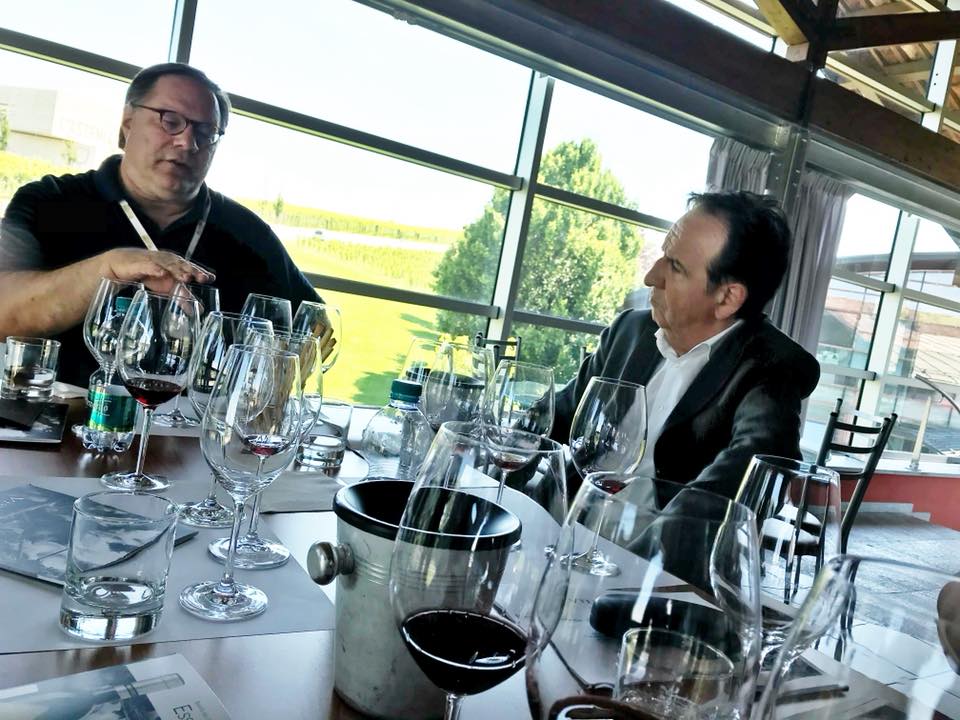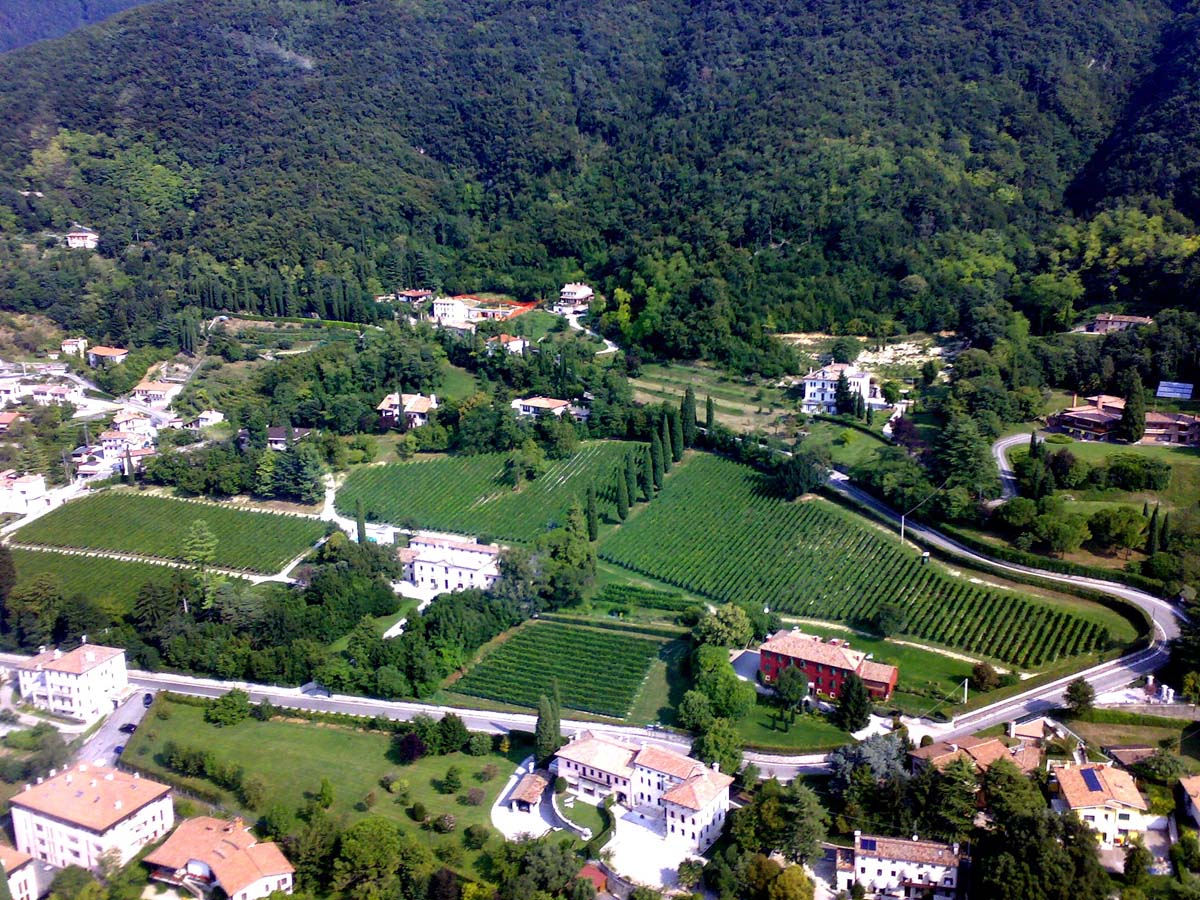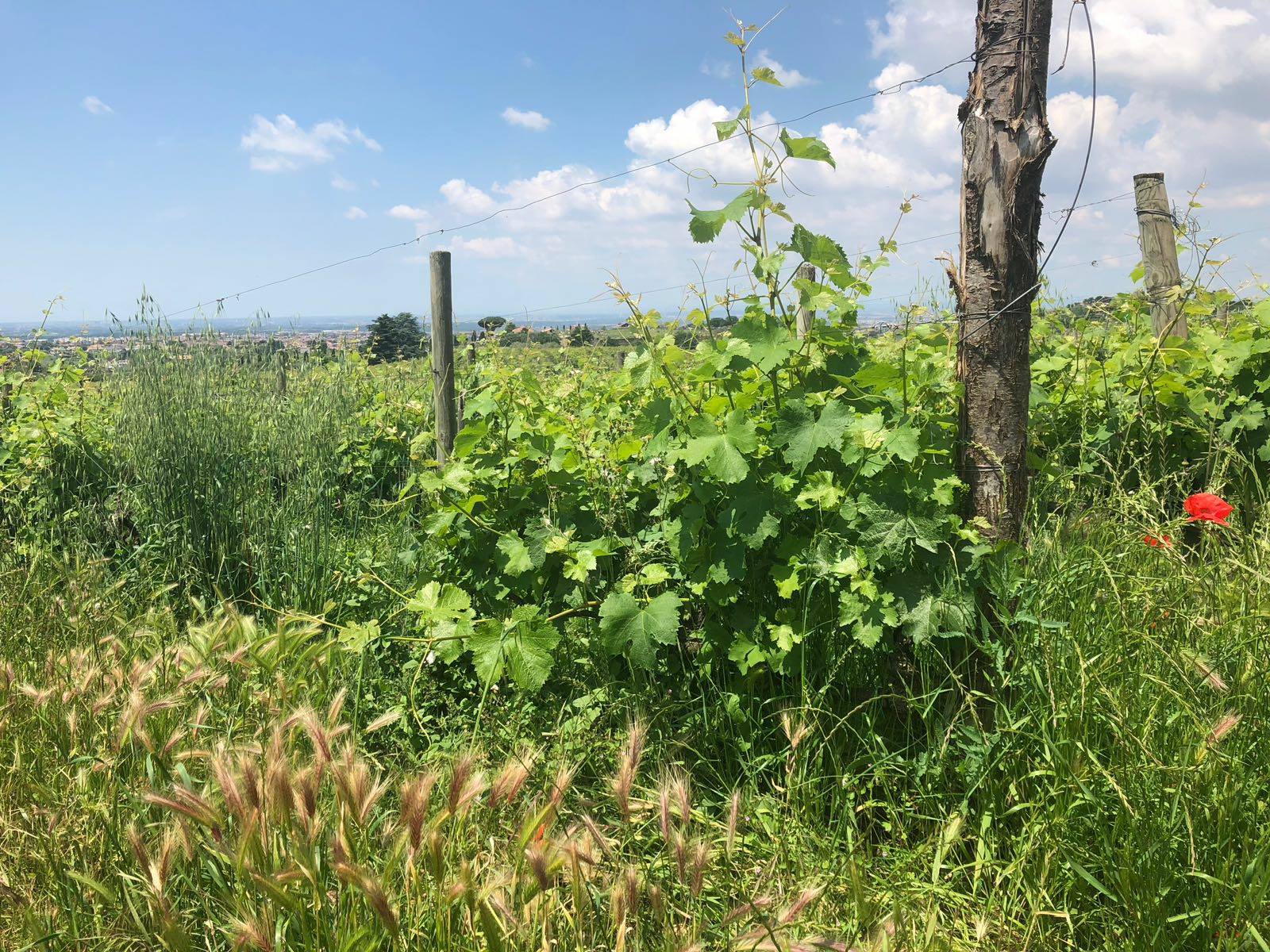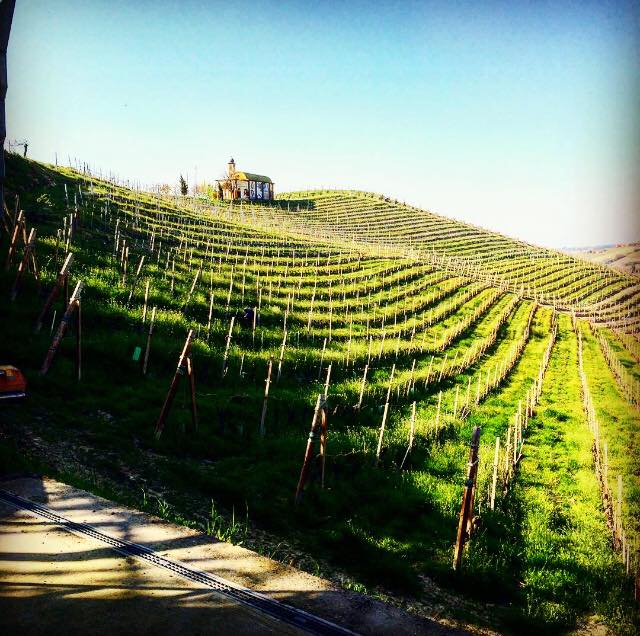From June 25 to July 2, sixty wine importers, sommeliers and writers from all over the world gathered in Barolo, Piedmont, for Collisioni Festival’s Vino&Food Project, a yearly event organized by Ian D’Agata, an Italian native grape expert and scientific director of the Vinitaly International Academy.

Ian D’Agata during a Collisioni tasting at Terre di Vino – Vite Colte
A pivotal moment occurred among the educational tastings, Michelin-starred dinners, winery visits and market advice imparted to Italian producers: a reassessment of Italy’s most famous—and most maligned—wines.
Prosecco

The Nino Franco estate in Valdobbiadene
When the temperature hits the twenties in the UK, Brits push for prosecco. During the Italian aperitivo hour, prosecco is often ordered without undue consideration (natural wine buffs continue to go crazy for prosecco col fondo, the cloudy version whose yeastiness derives from secondary fermentation in the bottle). Prosecco DOC is cheap, cheerful and has a market that appears unstoppable: 440 million bottles, 1.9 billion euro in retail value and a 45 per cent increase in production in just two years. But where there are bubbles, there’s hope. Father and daughter-managed Valdobbiadene producer Nino Franco only make Prosecco DOCG, quality-driven Italian sparklers that win you over with their authenticity. The Vigneto della Riva di San Floriano 2017 is a single-vineyard, single-vintage wine that boasts a thin persistent perlage, pleasurable peachiness and zingy acidity from Glera grapes grown on the steepest of chalky and clay soils.
Frascati

Castel de Paolis vineyards in Frascati
Search “Frascati” online and page after page about the Lazio town is revealed. Rome’s signature wine, produced in the countryside surrounding the city for two millennia, has virtually slipped into oblivion. Regarded as an inexpensive house white, it was all the rage in 1990s England, alongside Est! Est!! Est!!! from the more northerly Montefiascone (my theory is that people were fooled into liking it by the marketing wizardry of the exclamation marks and the fact there was once a popular restaurant of the same name in the UK). So, at this year’s Collisioni, when Fabrizio Santarelli, managing director of Castel de Paolis, wryly described his presentation of Frascati Superiore DOCG 2017 as “mission impossible”, the room sat up. One sip and Frascati was back in the game. A real looker with its enticing pale gold, exotic and exquisite aromas lead to a salty complexity stemming primarily from the 25-year-old Malvasia di Lazio vines. Seeing our faces, Santarelli quipped, “It’s a strange thing to be a start-up with 2,000 years of history.”
Moscato d’Asti

Fabrizio Ferrero’s Teresina vineyard in Santo Stefano Belbo, Piedmont
Moscato d’Asti is the quintessential panettone pairing at Christmas in Italy, selling discounted by the case in the country’s supermarkets. Mass production may have helped put the wine on the map, but the downside is that the industrialization continues to monopolize the market. Plus, there’s the issue of quality: the mechanized celebratory sparkler is either cloyingly sweet or not quite sweet enough. Frothed from the tricky-to-grow Moscato Bianco grape, independent producers have to be determined to make it. It ripens late, which increases the risk of disease. It’s thin skinned and the small berries are loosely bunched. Giovanni Ferrero, the father of winemaker owner Fabrizio, explained how the microwinery, which only produces 15,000 bottles annually, risked losing the 2017 vintage. “It was a very hot year, and heat ruins the Moscato’s natural aromas.” A bouquet of wild flowers and apricots, plus a massive sugar rush that’s borne out by astonishing acidity will convert dry wine lovers to this extraordinary artisanal dessert wine “Teresina”, originating from a small vineyard parcel in Santo Stefano Belbo, east of Alba.
–
Helen Farrell was a guest of the Collisioni Festival’s Vino&Food Project. Thanks to Ian D’Agata for the invitation and Giulia Corino for the flawless organization.







